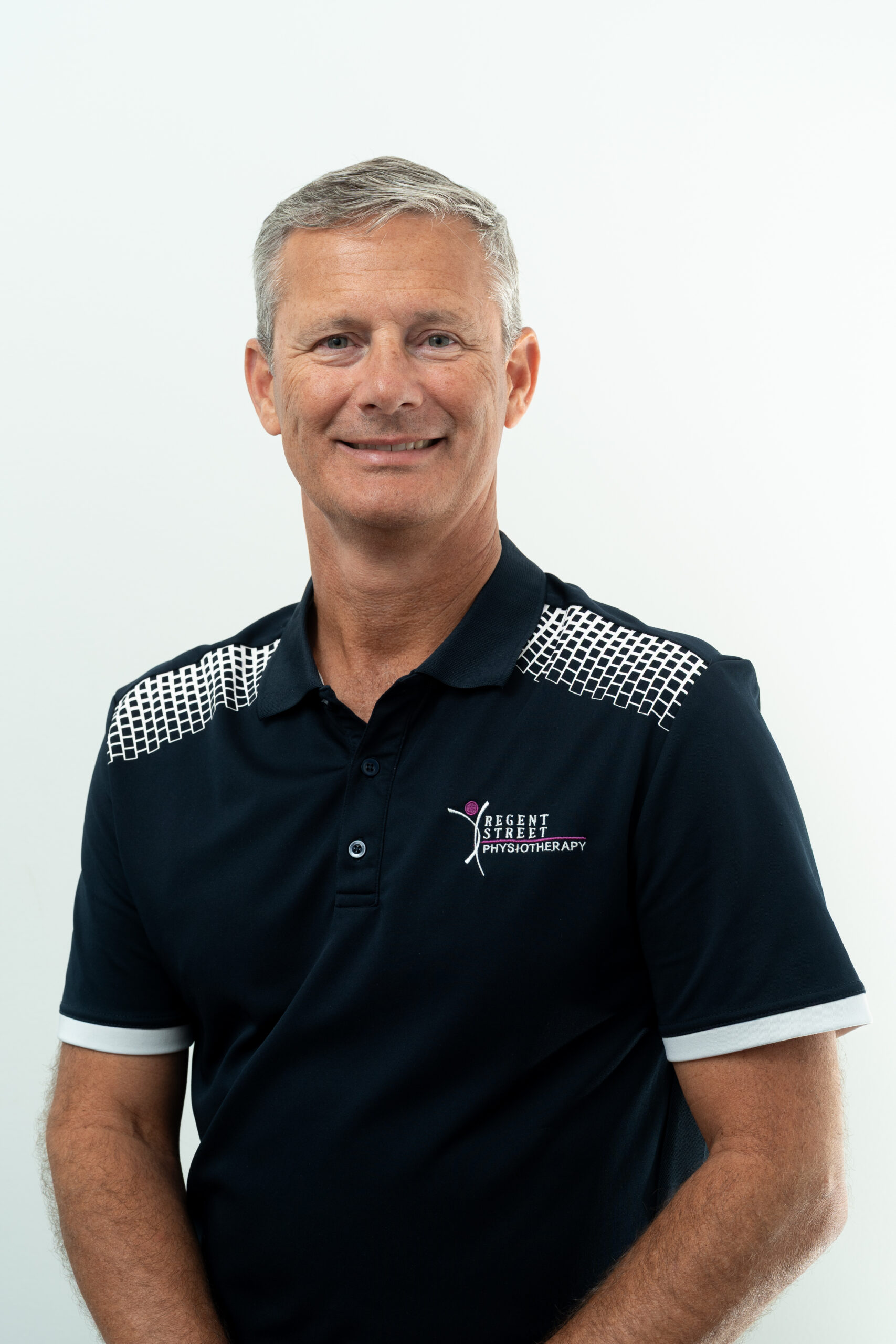Craig Boettcher
PhD, B.App.Sc.(Physio) Hons. Sydney
Senior Physio
Craig is the founder of Regent Street Physiotherapy, with a special interest in the assessment and management of shoulder and back injuries. Craig opened Regent Street Physiotherapy in 1999. He graduated with Ist Class Honours from The University of Sydney in 1992 and has worked in private practice in Newcastle for 23 years. Craig was awarded his PhD in 2010 by the Faculty of Medicine, The University of Sydney, for his research into shoulder function, and is currently an Honorary Associate researcher with the Faculty. During his career as a physiotherapist Craig has attended and presented at numerous courses and conferences including presentations at the World Congress of Physical Therapy, Vancouver 2007, the Australian Conference of Science and Medicine in Sport, Port Douglas 2010, and the Australian Physiotherapy Conferences, Sydney 2009 and Melbourne 2013, and is a presenter at the Level 3 Sports Physio course which is the final level of training for Physiotherapist’s attaining their Sports Title. Craig was also an invited course presenter for ‘The Management and Rehabilitation of Swimmers Shoulder’ at Aspetar, Sports Medicine Centre, in Doha, Qatar.
Craig was invited to present at The 7th International Olympic Committee World Conference on Prevention of Injury and Illness in Sport. Craig presented his session ‘The Sporting Shoulder’ at the conference which was held in Monaco from 29th February to 2nd March 2024. He will also be presenting at the SMA & ACSEP Joint Conference in Melbourne in October 2024.

"Craig is a Titled Sports Physiotherapist and has worked with local, State and National teams in many different sports. He has worked with the Australian Swim Team for over 8 years attending the Olympics, 3 World Championships and 2 Commonwealth Games with the team."
He has also travelled internationally with the Australian women’s softball, and Paralympic swimming and basketball teams. Locally he has worked with the Newcastle netball state representative teams for many years. He is an NSWIS and Hunter Academy of Sport preferred provider, and presents frequently for the Coast and Valley Swimming Association. Craig actively participates in ongoing research in shoulder pathology and management.
He is currently co supervising a PhD student examining swimmers shoulder, has co-authored a chapter in the book ‘The Shoulder’ by Jeremy Lewis, and also has ten published articles in peer reviewed journals. When not working Craig enjoys swimming and spending time with his wife Kellie and children Beau, Neve, Shae and Luke. His general working hours are: Monday, Wednesday 7.00am – 2.00pm and Thursday 7am – 12.30pm.
Publications
Journal of Science and Medicine in Sport
Subscapularis tendinopathy is highly prevalent in elite swimmer’s shoulders: an MRI study
September 2022
Journal of electromyography and kinesiology: official journal of the International Society of Electrophysiological Kinesiology 62(1): 102621
Analysis of phase detects altered timing of muscle activation in subjects with chronic shoulder pain
November 2021
Medicine & Science in Sports and Exercise
Is the normal shoulder rotation strength ratio altered in elite swimmers?
February 2020
Journal of Science in Medicine and Sport
Humeral torsion and shoulder rotation range of motion parameters in elite swimmers
October 2016
Physical Therapy in Sport
“Hand-held dynamometry strength measures for internal and external rotation demonstrate superior reliability, lower minimal detectable change and higher correlation to isokinetic dynamometry than externally-fixed dynamometry of the shoulder.
2016. Volume 21. Pages 75-81
Aspetar Sports Medicine Journal
“An inside look at Swimmer’s Shoulder’ – Part 1: antero-superior internal impingement (ASII) – a cause of ‘swimmer’s shoulder’.
Conference Paper
Reliability of Hand Held Dynamometry compared to Externally-Fixed Dynamometry for Shoulder Internal and External Rotation Strength Ratios
October 2014
Conference Paper
Correlation of Hand-Held and Externally-Fixed Dynamometry with Isokinetic Testing for Assessing Shoulder Internal and External Strength Ratios
October 2014
Clinical Anatomy
“A comprehensive analysis of muscle recruitment patterns during shoulder flexion: an electromyographic study”.
2011. July;24(5) Pages 619-26
Journal of Science and Medicine and Sport
Subscapularis does not stabilize the glenohumeral joint during throwing
December 2010
Journal of Science and Medicine in Sport
The role of shoulder muscles is task specific
May 2010
Journal of Orthopaedic Research.
“Standard maximum isometric voluntary contraction tests for normalizing shoulder muscle EMG”. Published Online: June 4 2008, DOI: 10.1002/jor.20675
Journal of Science and Medicine in Sport.
“The ‘empty can’ and ‘full can’ tests do not selectively activate supraspinatus”.
Published 2009, Volume 12. Pages 435-439. Ref. No: JSAMS-D-08-00197R1
Medicine and Science in Sport and Exercise
Which is the Optimal Exercise to Strengthen Supraspinatus?
October 2009, Volume 41(11).
Medicine and Science in Sport and Exercise
“Shoulder muscle recruitment strategies are task specific”. October 2009.
Book An Appointment
Organise an appointment with our highly
experienced and qualified physiotherapists.